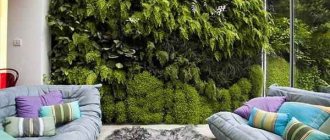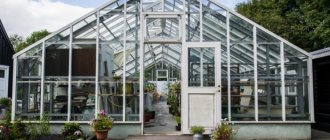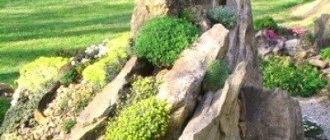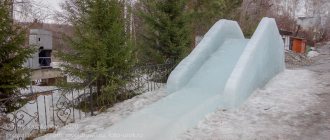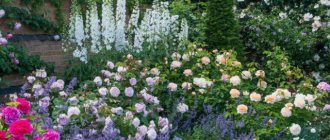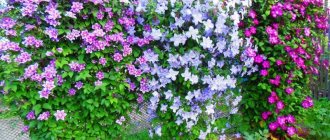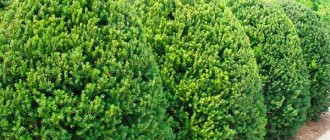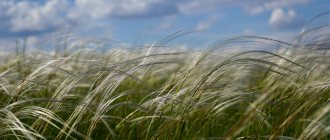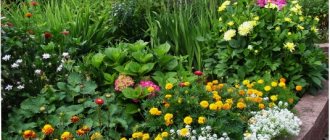- home
- Articles
- Winter garden - planning and design
The uniqueness of such a structure as a winter garden lies in the combination of aesthetics and functionality. This greenhouse-type structure allows you to increase living space, engage in plant growing, sunbathe, and enjoy the surrounding landscapes. The implementation of the idea begins with the detailed development of the winter garden project.
Winter garden project in detail
The quality of any structure depends on the accuracy of the calculations. When developing a project, it is important to take into account the customer’s wishes for the appearance of the product and at the same time provide for the features of materials from an engineering point of view. The winter garden project includes such details as:
- type of building (independent or adjacent);
- location (landscape features are taken into account);
- total area;
- frame structure and material;
- image of the winter garden, design of the structure (cone-shaped, trapezoidal, multifaceted or other);
- functionality (equipment with communications, presence of openings, sashes);
- internal content (pond, green spaces, furniture, decorative items).
Without a detailed study of the future structure, it is impossible to begin its construction. A winter garden project, made in sketches or three-dimensional graphics, makes it possible to see how the result will correspond to the customer’s idea, how the structure will look against the background of the house and the surrounding area.
Bright colors and new shapes
Some trees and shrubs store berries on their branches for the winter. Bright clusters and brushes look beautiful and at the same time attract birds to the garden. Here's how to add some color to the winter months:
- Rowan. Scarlet, large clusters of berries remain on the branches of the mountain ash almost until spring. Chokeberry clusters are bluish-black, dark, and against the background of snow they look especially bright and contrasting;
- Hawthorn berries remain on the branches for the winter. Depending on the variety, they can be black, blue, brown, scarlet;
- Sea buckthorn in winter is covered with bright orange clusters of berries. Some varieties also retain foliage on their branches;
- The berries are stored on the branches of viburnum for the winter. Usually there are a lot of them, they look bright, the color is scarlet, and they are collected in large brushes.
Berries remain on many bushes. In barberry they are small, red, and densely cover the branches. Rose hips have large red fruits, while European euonymus have soft pink fruits. In winter, yellow berries remain on mahonia, and red berries (light or with an orange tint) on honeysuckle. The berries of privet are dark blue, those of cotoneaster are scarlet. In all these species, the fruits remain until spring (they may change color towards the end of winter and become faded).
You can complement the bright fruits by using herbs and grains to decorate your garden, properly preparing it for winter. PositiveProject employees recommend:
- leave the inflorescences of teasel, hydrangea, tansy, and other plants for the winter. Under the snow they will look voluminous and unusual;
- use more cereals to decorate the winter garden: reed grass, feather grass, miscanthus, sheep, molinia, pearl barley, ryegrass. If you do not cut off their panicles in the fall, they will remain until spring. Some grains remain green in winter (if they grow in sunny places and are well protected from the wind);
- do not remove late-flowering annuals from flower beds and flower beds so that they do not look empty. Plants sprinkled with snow will add volume.
Products and services of Window Factory
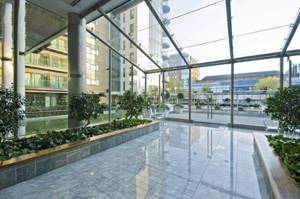
Winter gardens
Can be used as a greenhouse and living space. A large selection of materials allows you to create light and elegant designs in various colors and types of glazing.
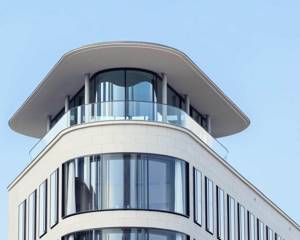
Frameless glazing
Creates the effect of a panoramic window. Combines safety, ease of use and maintenance. An ideal solution for a loggia or terrace.
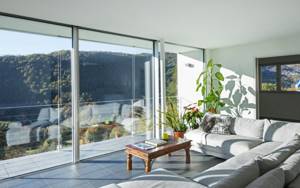
Panoramic glazing
Presentation and large sizes are the main difference between panoramic windows. An excellent option for decorating a terrace, swimming pool, bay window, roof, winter garden.

Portal windows
A new look at opening windows. The sash is simply retracted to the side, saving free space in the room. An excellent solution for creating a panoramic view from the window.
Aluminum windows
Durable and modern aluminum windows are reliable, safe and durable in use. An excellent alternative to plastic and wood at an affordable price.
Snowdrops, hyacinths, daisies.
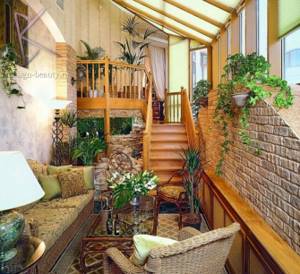
Plants not only decorate the interior of the house, but also contribute to good rest.
The winter garden is a stunning sight and a find for city residents
It’s a pity that not every apartment allows you to create a corner of wildlife in your home, but if you really want to, you can adapt a glazed loggia or balcony, terrace, veranda, or second floor of the house for this purpose
A classic winter garden is a separate room or part of a house, a specially equipped and glazed room in a certain way with a fountain, greenhouse
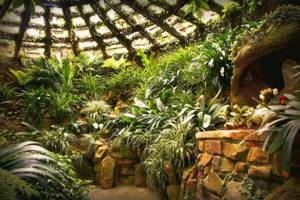
The beauty of a winter garden is especially evident when it is cold and frosty outside, and you enjoy the rays of the sun penetrating through the glass, surrounded by green foliage and humid air.
But what about those for whom a winter garden is not yet available, but really want to create their own corner of nature in the apartment?
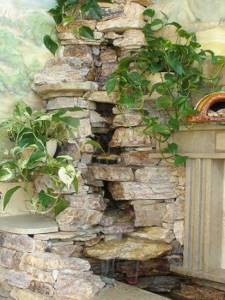
There are several rules that will help you create the right conditions for a cozy garden in your apartment.
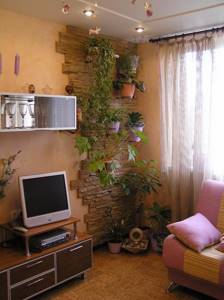
1. A large plant for a large room.
Don't make a forest of trees in your home.
Place a large plant in an empty corner
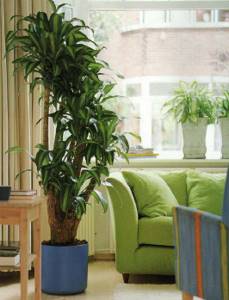
Combine small plants into groups, preferably according to the principle of one watering
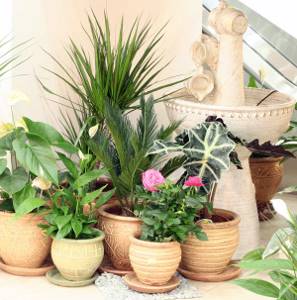
Basic rules of composition in phytodesign
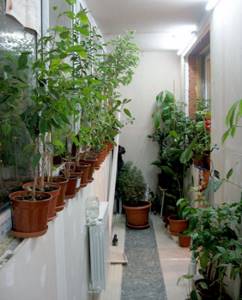
Low and wide plants are good in combination with tall and slender ones, light green with dark green, large leaves with small ones.
High ones are placed in the background and low ones in the foreground.
A hanging strand will complement the composition
Plants look especially beautiful against a light background.
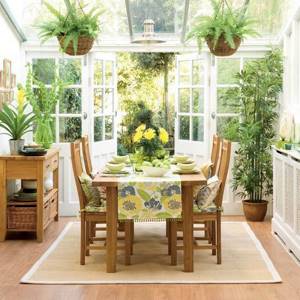
Make the room stylish:
if the flowers repeat the tone of the furniture upholstery, curtains, wallpaper
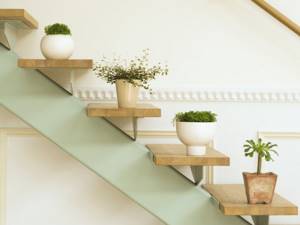
To enlarge the room, place voluminous, spreading plants with openwork leaves in it.
Tall plants placed on the floor will raise the ceiling, spreading ones will lower it
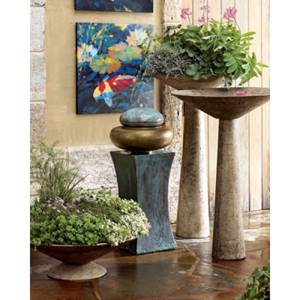
Even the most modest interior can be enhanced by a beautiful plant of a bizarre shape. And by playing with lighting you will enhance its attractiveness
Project stages
Development of a general architectural model of a winter garden is one of the design stages. In addition to creating a visual representation, elaboration of the technical component is required. It is a fair opinion that a good plan is the key to success. Therefore, designing a winter garden must be divided into stages, each of which will be responsible for its part of the overall idea:
- Definition of the image. At this stage, the creative side of the idea is expressed. A winter garden, in principle, personifies beauty, and modern technologies make it possible to achieve a unique shape with almost no restrictions. Do not forget about the role that the structure will play (veranda, greenhouse, living room, recreation room, etc.).
- Development of a spatial scheme. An important stage of the project from an engineering point of view. The design of a winter garden is a structure formed from double-glazed windows and a frame system. It is the frame that will determine the shape of the glass elements that form the edges of the building. When determining the size of the area, experts recommend starting from 15 m2 or more. This directly affects the cost per square meter - the larger the total area, the cheaper it is. The roof can be made in a complex multifaceted shape. In this case, it is desirable that the slope of the edges maintain a range of 30-40 degrees. This is the optimal value for self-cleaning of snow in winter and for effective distribution of direct light in warm seasons.
- Choice of frame material. The material of the supporting structures will affect the properties of the future garden, such as: ecology and internal microclimate;
- requirement for special care;
- possibility of using complex shapes;
- weight characteristics;
- overall strength of the structure.
In winter, heat is required not only for the room, but also for the soil and plantings. To do this, the supply to the heating registers can be hidden in the soil channels along the inner perimeter of the winter garden. In this case, the pipes must be waterproofed. The internal area can be made using heated floors under tiles.
- Lighting - natural and artificial. An important factor for a future greenhouse is a sufficient amount of light. The design of the garden itself already implies the presence of natural light. However, direct rays can have a detrimental effect on flora. In this case, reflective glass, blinds, etc. are used. Artificial lighting solves two problems at once: decorative design and lighting needed by plants.
- Air humidity. This factor can be maintained by installing artificial ponds, fountains, waterfalls or air humidifiers.
Plants with unusual branches for the winter flower garden
Common hazel Contorta
Some trees and shrubs with twisting shoots have an unusual appearance. Common hazel (Corylus avellana) form Contorta with twisted, strongly intertwined branches, characterized by slow growth, the maximum height of the bush is about 5 m. Hazel is undemanding to growing conditions, frost-resistant, and shade-tolerant.
The Matsuda willow form (Salix matsudana f. tortuosa) has a spreading pyramidal crown with spirally twisted shoots. A hybrid of Matsuda willow and Babylonian willow, it has a weeping crown with yellowish-red curved shoots. These species are undemanding to soil, moisture-loving, but have average winter hardiness and can freeze out in severe winters. Low-growing willow hybrids, united under the name Sverdlovsk sinuous, reach a height of 2-3 m. Hybrids created by domestic breeder V.I. Shaburov, showed good stability in harsh conditions.
Iwa Matsuda
Choice of frame and glazing
The strength of the entire structure and its service life will depend on the materials from which the frame is made, the type of double-glazed windows and the glass itself. Wooden, aluminum and PVC profiles are used for the construction of winter gardens. Glass, by its nature, is a fairly heavy material, so it is important to imagine the load on the frame elements in individual structural units. To lighten the total weight, it is possible to use single-chamber double-glazed windows in aluminum or PVC profiles. The design of winter gardens involves the calculation of all possible loads; experienced engineers and architects will determine the design features of the structure based on the limit values established for certain components and parts of the structure.
To protect metal supports from condensation and corrosion, treatment with liquid thermal insulation is necessary. Wooden rafters will need to be coated with an antiseptic, which will prevent the development of fungus.
Winter garden design
The overall design of a winter garden involves elaborating the appearance of the structure - whether it will be a continuation of the house or an independent structure, how organically it will fit into the overall style of the house or site. The development of the interior, that is, the internal content of the greenhouse, can also be included in the project at the request of the customer. This winter garden design involves the use of a variety of decorative elements: ceramic tiles, stained glass windows, lamps, furniture, artificial stones, fountains, curtains and blinds and many other interior items. Moreover, during the design process, you can develop a plan for landscaping the greenhouse and decide on the types of plants that will be grown. This stage of work is carried out by professional landscape designers.
